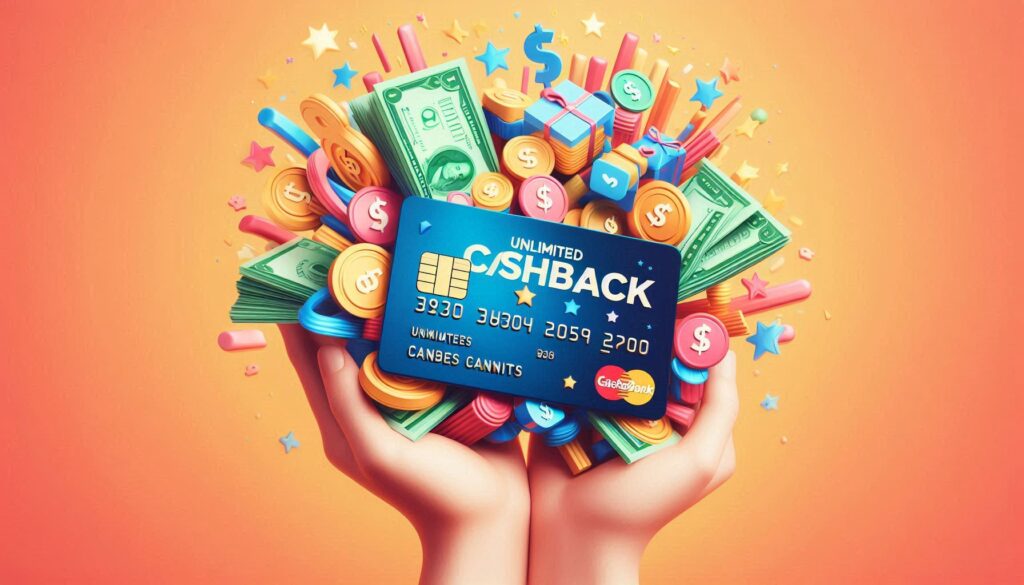Unlimited cashback vs Category bonuses: How to choose the best credit card in the U.S.
Choosing the perfect credit card in the U.S. can feel like solving a puzzle, especially when comparing unlimited cashback to category bonuses. Each option sounds appealing, but understanding the real value behind them is key.
If you’re trying to stretch every dollar, selecting the right rewards structure can make a noticeable difference. Knowing how these cards work—and which matches your lifestyle—will help you unlock their full potential.
Understanding unlimited cashback and category bonuses

Before deciding between unlimited cashback and category-specific bonuses, it’s crucial to grasp how each reward system operates. These two models cater to different spending habits and can influence how much value you extract from your everyday purchases.
What makes unlimited cashback so appealing?
Unlimited cashback cards offer a flat percentage back on every transaction, regardless of where or how you spend. This means you can swipe confidently at the grocery store, gas station, or your favorite online shop, knowing you’re earning the same reward rate every time.
One major advantage is the simplicity. You won’t need to track rotating categories or activate special offers. For people who prioritize convenience and consistency, unlimited cashback can provide steady returns without added hassle.
Most unlimited cashback cards in the U.S. range from 1.5% to 2% on all purchases. Over time, that predictability can lead to substantial earnings, especially for those with diverse spending patterns.
Who benefits most from unlimited cashback?
If your monthly expenses span various categories without a clear focus, unlimited cashback works in your favor. Households balancing costs like utilities, dining out, and entertainment can see consistent returns without strategizing every purchase.
Additionally, travelers or professionals with irregular spending routines often prefer unlimited cashback to avoid missing out on rewards when expenses shift unexpectedly.
How category bonuses multiply your rewards
Category bonus cards offer higher cashback percentages on specific spending areas, such as groceries, gas, dining, or travel. These cards maximize rewards when your expenses align with their bonus structures.
Why are category bonuses worth considering?
With category bonuses, it’s possible to earn between 3% and 6% on select purchases. If your lifestyle revolves around a few concentrated spending areas, these cards can outperform unlimited cashback options by a significant margin.
For example, a family that spends heavily on groceries and gas each month will likely earn more using a card with targeted bonuses in those areas. In contrast, someone who rarely cooks at home may find less value in such categories.
Many category bonus cards also include rotating offers, allowing users to activate temporary boosts in spending categories. While this requires extra attention, the payoff can be impressive for those willing to track promotions.
Who should choose category bonuses?
Anyone with predictable monthly expenses concentrated in bonus categories should prioritize these cards. Budget-conscious shoppers who regularly spend in the same areas, such as supermarkets and fuel stations, can maximize their returns efficiently.
Likewise, frequent travelers often find high-value category bonuses in travel-related expenses, including airfare, hotels, and rideshares. By tailoring spending to these categories, the right card can turn ordinary purchases into significant rewards.
How to decide which card fits your lifestyle
Comparing unlimited cashback and category bonuses comes down to evaluating your spending habits. There’s no universal answer, but a thoughtful analysis of your expenses will lead you to the most rewarding choice.
Analyze your monthly expenses
Start by reviewing three to six months of statements to identify where your money goes. If you notice balanced spending across various categories without strong patterns, unlimited cashback is likely the smarter option.
On the other hand, if your budget is clearly dominated by a few categories—such as groceries, dining, or travel—a category bonus card could deliver more value. This strategy helps you maximize returns where you spend the most, turning everyday expenses into bigger rewards.
Tracking your spending may reveal overlooked patterns. For example, daily coffee runs and regular online shopping might fit within specialized bonus categories you hadn’t considered.
Combining cards for maximum rewards
Some consumers take advantage of both strategies by using multiple cards. By pairing an unlimited cashback card with a category bonus card, you can optimize every purchase.
For instance, use your category bonus card when buying groceries or gas and switch to your unlimited cashback card for all other purchases. This way, you never miss out on rewards, no matter where you spend.
However, managing multiple cards requires organization. You’ll need to remember which card applies to which category and stay on top of any rotating offers or promotions.
Don’t overlook fees and perks
While rewards are important, the best credit card for you also depends on annual fees, interest rates, and additional perks. Some high-earning category bonus cards come with annual fees, so make sure your spending justifies the cost.
Meanwhile, many unlimited cashback cards waive annual fees entirely, making them a safer option if you’re unsure how much you’ll spend. This makes them ideal for those seeking effortless rewards without the pressure to cover annual costs.
Other features, such as purchase protection, travel insurance, and extended warranties, can also tip the scales. Evaluate all benefits to ensure the overall package meets your financial goals.
Future-proof your choice
Your current spending habits might change over time, so flexibility matters. Consider how your lifestyle might evolve over the next few years. A student may prioritize dining rewards today but shift toward travel bonuses after graduation.
Choosing a card with adaptable features, or one that allows product changes, can protect you from needing to close accounts and hurt your credit score later on. Flexibility like this keeps your credit history intact while adjusting to your changing financial needs.
Finding the perfect balance for your wallet
In the debate between unlimited cashback and category bonuses, the real winner is the card that matches your unique lifestyle. By studying your spending and considering future needs, you can make a decision that maximizes rewards without adding stress.
No matter which route you choose, the key is aligning your credit card strategy with your daily habits. With the right plan, every purchase can bring you closer to financial benefits that go beyond simple spending.
Graduated and master's student in History. Fanatic of books and series. Editor since 2023.




